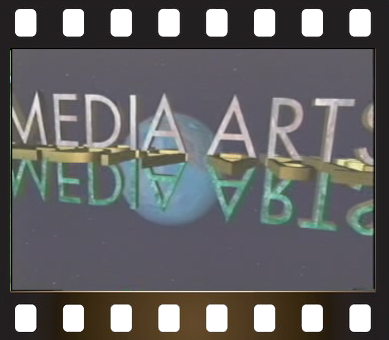Exploring the Frontiers of Cyberspace (extracts from a longer piece)
“Poetry is liquid language" (Marcos Novak)
“As a writer of fantasy, Balzac tried to capture the world soul in a single symbol among the infinite number imaginable; but to do this he was forced to load the written word with such intensity that it would have ended by no longer referring to a world outside of its own self…. When he reached this threshold, Balzac stopped and changed his whole program: no longer intensive but extensive writing. Balzac the realist would try through writing to embrace the infinite stretch of space and time, swarming with multitudes, lives, and stories." (Six Memos for the Next Millennium, Italo Calvino)
Is it possible to imagine a labyrinth without a defined pattern, without a center or exit point? What if we enter that labyrinth and wander through its hallways, endlessly opening doors which lead to other doors, with windows which look out over other windows? What if there is no real core to the labyrinth and it is of unknown size? This may be an apt metaphor for virtual reality, for the vast network of ideas which now float across and between the many layers of cyberspace.
“A year ago, I was halfway convinced that cyberspaces where you can experience the sensation of hefting a brick or squeezing a lemon probably won’t be feasible for another twenty or thirty years. A month ago, I saw and felt something that shook my certainty. When I tried the first prototype of a pneumatic tactile glove in inventor Jim Hennequin’s garage in Cranfield, an hour’s drive southwest of London, I began to suspect that high-resolution tactile feedback might not be so far in the future. The age of the Feelies, as Aldous Huxley predicted, might be upon us before we know what hit us." (Howard Rheingold, Virtual Reality, New York: Touchstone, 1992, p. 322)
Sometimes the hallways of this labyrinth narrow and we hear the distant chatter of many people and are able to ‘browse’ or ‘gopher’ into their conversations. Other times, we actually encounter fellow wanderers and exchange details about geography, the time, information gained or lost during our travels. The excitement of being in the labyrinth is tempered by the fact that as we learn more and more about its structure and about surviving within its confines, we know that we have little hope of leaving. Yet, it is a nourishing experience at one level because there are so many different elements to it, all with a life of their own, all somehow connected and for the most part available to us. In fact, even though we know that the labyrinth has borders, it seems as if an infinite number of things could go on within its hallways and rooms. It is almost as if there is too much choice, too much information at every twist and turn. Yet, this disoriented, almost chaotic world has a structure. We don’t know the designers. They may have been machines, but we continue to survive in part because we have some confidence in the idea that design means purpose, and purpose must mean that our wanderings will eventually lead to a destination. (This may be no more than a metaphysical claim, but it keeps the engines of Cyberspace running at high speed.)
In order to enter a virtual labyrinth you must be ready to travel by association. In effect, your body remains at your computer. You travel by looking, by reading, by imaging and imagining. The eyes are, so to speak, the royal road into virtuality.
“Cyberspace — The electronic frontier. A completely virtual environment: the sum total of all [BBSes], computer networks, and other [virtual communities]. Unique in that it is constantly being changed, exists only virtually, can be practically infinite in “size" communication occurs instantaneously world-wide — physical location is completely irrelevant most of the time. Some include video and telephone transmissions as part of cyberspace." (A. Hawks, Future Culture — December 31, 1992)
In the labyrinth of Cyberspace, design is the logic of the system. Cyberspace reproduces itself at so many different levels at once and in so many different ways, that the effects are like an evolutionary explosion, where all of the trace elements of weakness and strength coexist. The architecture of this space is unlike any that has preceded it and we are consequently grappling with discursive strategies to try and describe the experiences of being inside it. The implication is that there is no vantage point from which you can watch either your progress or the progress of others. There isn’t a platform upon which you can stand to view your experience or the experience of your neighbours. In other words, the entire system doesn’t come into view — how could you create a picture of the Internet? Yet, you could imagine the vast web-like structure, imagine, that is, through any number of different images, a world of microelectronic switches buzzing at high speed with the thoughts and reflections of thousands of people. The more important question is what does this imagining do to our bodies, since to some degree Cyberspace is a fiction where we are narrator and character at one and the same time? What are the implications of never knowing the shape and architecture of this technological sphere which you both use and come to depend on? What changes in the communicative process when you type a feeling onto a computer screen, as opposed to speaking about it? What does that feeling look like in print? Does the computer screen offer a space where the evocative strength of a personal letter can be communicated from one person to another?
 Thursday, September 25, 2008 at 12:10PM
Thursday, September 25, 2008 at 12:10PM 




